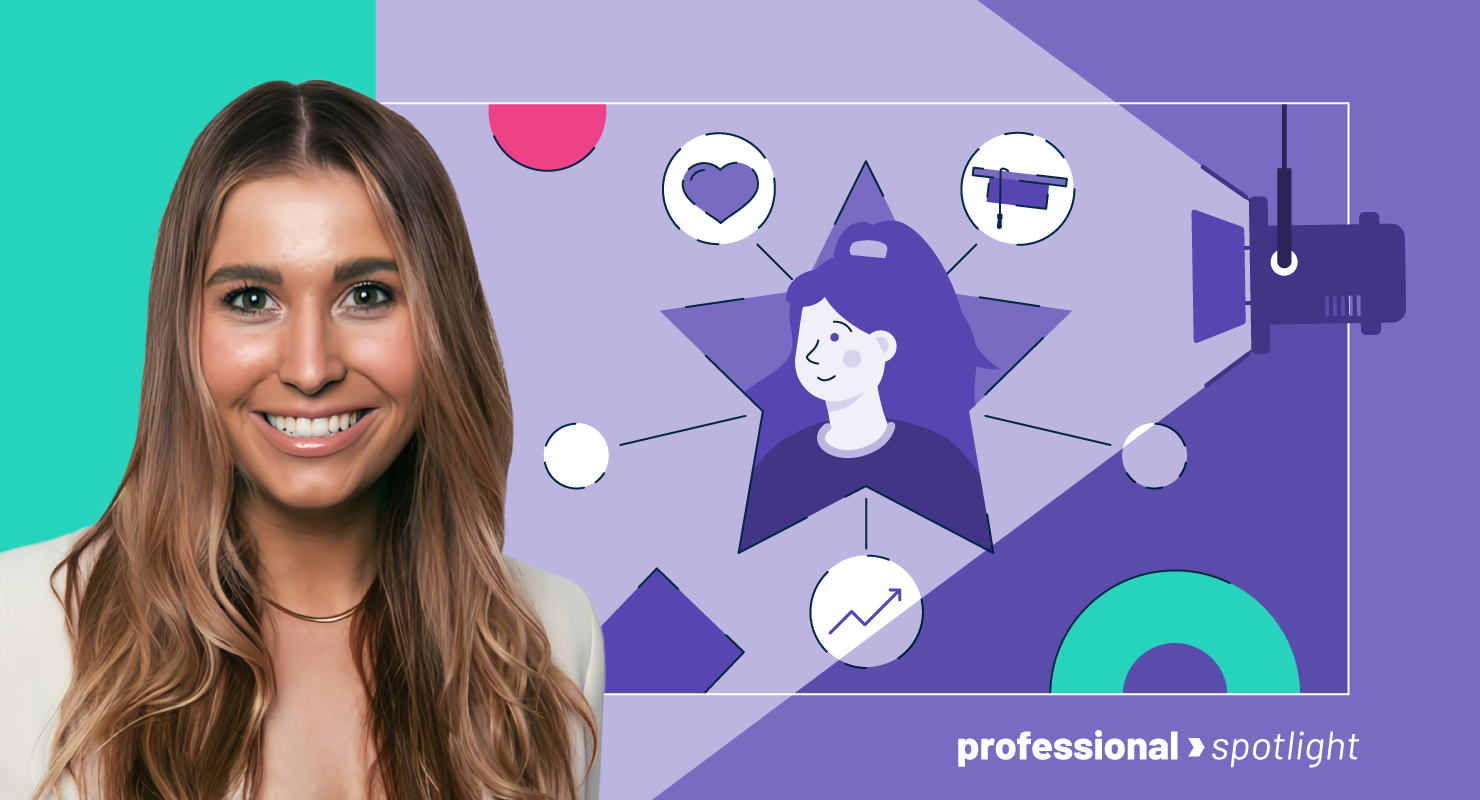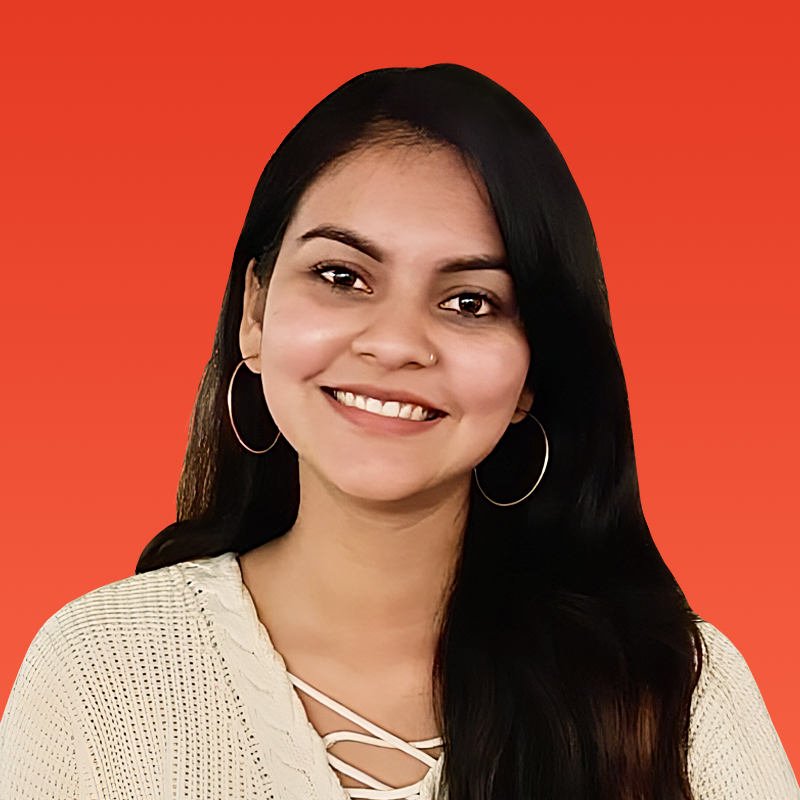November 13, 2024
 by Tanushree Verma / November 13, 2024
by Tanushree Verma / November 13, 2024

In today's digital-first era, marketing has undergone a seismic shift, with social media and influencer marketing taking center stage. A few years back, being an influencer wasn’t even considered a real profession but now influencer marketing is an actual term and a full-blown job.
“Brands need to create a vibe to attract customers, and for that, influencer marketing is your best bet,” says Zoë Hartsfield, senior manager of influencer marketing and evangelism at Apollo.io.
While influencer marketing is popular in the B2C space, B2B companies have yet to utilize its full potential. Be it strategic planning, choosing the best platform, or collaborating with influencers, Zoë pulls back the curtain on how brands can achieve that, offering a glimpse into the future of marketing and beyond.
This interview is part of G2’s Professional Spotlight series. For more content like this, subscribe to G2 Tea, a newsletter with SaaS-y news and entertainment.
What's your favorite beverage? I am an avid coffee drinker, so I probably have too many cups of coffee in a day. I have to have my hot cup of cappuccino every single day, regardless of the temperature. I am having one now.
What was your first job? The first time I earned money was when I was 16 and raising funds for charity with my friends. We came up with a creative idea called flamingoing, which involved placing a flock of pink flamingo lawn ornaments on someone's yard overnight.
Unlike vandalism, this harmless prank was meant to amuse rather than damage. People would wake up to 50 pink flamingos adorning their lawns! It became a local sensation, with people taking pictures and sharing the experience. Through this fun and quirky method, we managed to raise around $2,000.
People would nominate lawns to "flamingo," and make donations to support our cause. We'd then carry out the prank under the cover of darkness. It was a memorable week and an effective way to fundraise, blending humor with a good cause.
What's your favorite software in your current tech stack? I'm practically living in Canva! I find myself using it almost every day. Whether I'm working on my full-time job or creating content during my personal time, Canva is essential. Between Canva and Notion, I achieve about 90% of my work tasks, both professionally and creatively.
What problems at work make you want to throw your laptop out the window? Lately, I've been creating a lot more video content, and it's pushing my laptop to its limits. I often encounter the frustrating "spinning wheel of death" when my laptop struggles to handle too much processing. Just recently, I spent four hours editing a video, only to have my laptop crash; I lost all that work and a few tears at my desk. My most frustrating moments typically arise when I lose footage or encounter processing issues during video editing.
Tanushree Verma: Can you tell us a little bit about your journey and how you came to your current role at Apollo.io?
Zoë Hartsfield: I started my career as a full-time sales development representative (SDR) while still in school. Later, I made a deliberate shift into marketing, beginning as a social media community marketer, then advancing into partnerships, and eventually returning to focus on community and content marketing. Currently, I work at the intersection of content and influencer marketing, serving as an in-house content creator for Apollo.io.
My role involves managing various channels that integrate elements of social and community engagement. These channels require a more personal touch for content curation. My responsibilities encompass executive branding, employee advocacy, marketing, and evangelism.
What does a typical day look like for you?
For me, every day looks different. I'm shifting my focus a bit more towards in-house content creation this coming quarter so that has led to a varied schedule.
Typically, my day kicks off by clearing my inbox to zero and tackling all the leftover tasks from the previous day. Then, I review influencer contracts, ensure accounts payable is in order, and confirm that everyone's deliverables are on track. I check our content calendar and dedicate a chunk of my morning to sourcing content ideas and scouting social media for potential influencer partnerships.
I usually try to find a 50/50 balance between brainstorming funny and relatable sales-related content and spotting trends that can be adapted for Apollo.io or even my personal style. Copywriting is a constant throughout my day, interspersed with meetings, collaborative sessions, and project updates. Afternoons are reserved for influencer check-ins, ensuring everything's flowing smoothly and folks have what they need.
When the clock strikes five (or, more often, six), I call it a day, head to the gym, and then return for some personal brand work in the evening. Each day is a fresh adventure, unlike my former sales role, where I religiously followed structured call blocks and prospecting time. However, I try to bring some of that structure into my marketing role.

Keep up with what’s really going down in marketing with the G2 Tea newsletter. Subscribe here
You’ve made some impressive transitions — from a financial services specialist to a business development role, and now into influencer marketing. How have you adapted to these shifts, and do you feel that transferable skills are essential for career growth today?
I feel that, at the end of the day, everything is about transferable skills, and no one is ever fully prepared for the next challenge until they are in the thick of it. Something like that happened to me as well. My journey began with an unexpected role where I was folding sweaters at Banana Republic during college. Surprisingly, each step, from retail to financial services and later delving into tech, enriched my skill set, and I kind of paved my path forward from sales to marketing.
I learned on the job, and one of the most valuable lessons I learned early on was what I didn't want to do for the rest of my life. You get really clear on what you want to do by doing a bunch of stuff that you hate. That’s what happened to me. I learned pretty quickly that working in a call center, doing data entry for hours, or folding sweaters was not my vibe.
Each role taught me something new: salesmanship from pitching credit cards, empathy and patience in financial call centers, listening skills, and even copywriting — each building on the last.
Ultimately, I figured that by sharing my learnings, I could create a brand for myself, which kind of sets the stage for my current role, which leverages brand evangelism. No kid dreams of becoming an influencer marketing manager, but here I am, a culmination of trial and error and seizing opportunities.
How do you think influencer marketing has changed over the years, and do you think a company can be too big or too small to benefit from influencer marketing?
Influencer marketing is evolving and branching into two main strategies. On one hand, it's becoming a performance marketing powerhouse, emphasizing metrics like clicks and ROI.
On the other hand, it's a strategic brand play, focusing on impressions and community engagement. Brands are increasingly gravitating toward this branding approach, predicting a rise in user-generated content (UGC) alongside influencers.
A notable trend, I feel, is the shift toward micro-influencers. Brands often chase the glamor of popular influencers but find that as their brand grows, engagement eventually dips while costs continue to soar. Instead, collaborating with micro-influencers — those with fewer but highly engaged followers — offers a more targeted audience and better ROI.
“Brands need a vibe, a personality, whether through internal subject matter experts or external influencers."
Zoë Hartsfield
Senior manager of influencer marketing and evangelism at Apollo.io
It is crucial for brands to incorporate influencer marketing into their strategy. Influencer partnerships are about renting credibility and trust. Betting on influencers to connect with their audience and building rapport with brands can help companies grow vastly.
Ultimately, the right strategy depends on the brand's goals. For performance marketing, small companies might struggle without larger budgets, whereas building brand sentiment can be more cost-effective and experimental. Regardless of company size, with realistic expectations, influencer marketing offers valuable opportunities for all.
How has the role of influencer marketing evolved in the B2B space compared to the B2C space?
B2C brands have been riding the influencer marketing wave for years, capturing wide audiences with ease. Meanwhile, B2B companies are just beginning to catch the trend.
In B2C brands, where the price points of the products are usually low, it’s easier to find people with a larger following to promote your product. Whereas, in B2B marketing, products like SaaS tools often have smaller audiences and are difficult to promote. This form of marketing revolves more around collaborating with subject matter experts who understand your product intricately and can convey its value. This requires brands to be more strategic with their partnerships.
There's an experimental nature to B2B influencer marketing due to its newness and lack of established pricing norms — it’s still the ‘Wild West'. You might encounter a wide range of costs for similar influencer posts, impacted by engagement metrics and audience quality rather than follower count alone.
The key difference? B2B requires a specific strategy: targeting decision-makers and aligning with influencers whose audiences include those decision-makers. Fewer buyers mean less room for generic broad-stroke marketing. It's about precise partnerships with educators and thought leaders rather than just influencers with sheer numbers.
How crucial do you think it is for businesses to maintain an active social media presence, and what are the key benefits they can expect?
We’re all in the age of social media, where most of us are active on at least one platform. As a brand, embracing the mantra of 'meet your audience where they are' is viral.
Instagram boasts a whopping 2 billion users, with 170 million logging in daily and actively engaging. This massive pool isn't just a number; it's packed with potential buyers and prospects. For B2C and D2C companies, platforms like Instagram and TikTok are gold, whereas B2B companies might find their niche on LinkedIn's billion-user network.
LinkedIn sees about 140 million people logging in weekly, yet remarkably, only 1% create content. I see a great opportunity here to reach the 99% who are consuming content.
This landscape suggests a golden chance for brands to stand out and captivate an otherwise passive audience to align with them.
“People buy from people they like, people they trust. They buy from brands they like and align with.”
Zoë Hartsfield
Senior manager of influencer marketing and evangelism at Apollo.io
Engagement is driven by presence where it's less crowded. To communicate your brand’s mission, vision, and values, you can't solely rely on organic discovery through search engines. Rather, prioritize going to where your audience resides. Building an influential social media presence fosters not only brand awareness and trust but can turn passive scrollers into engaged community members.
I saw one of your posts where you talked about the power of LinkedIn and how you grow your account by teaching people. Can this strategy also be beneficial for brands, particularly in the B2B sector?
Capturing people’s attention is an art. That's why content that's fun, exciting, and intriguing is important. I believe educational content, especially edutainment content that is both informative and fun, does best on LinkedIn.
Josh Garrison, Apollo.io's VP of content and product education, gave me a mandate that stuck with me: If viewers don’t gain actionable insights from our content, whether a 30-second clip or an hour-long webinar, we've missed the mark. This stands true for brands that are trying to make a strong market presence.
In the B2B space, brands should think of educational content as their foundation, residing at the intersection of what they’re passionate about, their audience’s challenges, and their product solutions. That's where you should aim to teach relentlessly. So, I do think education is the underpinning. Teaching people something that makes them better at their jobs or better at life is what builds trust, rapport, and credibility.
What are your future plans for Apollo.io, and are there any new initiatives or projects on the horizon that you're particularly excited about?
These are exciting times for Apollo.io, and with my role, I can’t give away too many details. We have started to experiment and are betting on platforms like YouTube that we haven’t done before. We have collaborations coming up with some really big YouTubers who speak to the sales audience. The next couple of months are crazy for us, but I am looking forward to the projects in the pipeline.
What advice would you give to brands that are just starting with influencer marketing?
My constant piece of advice to brands is to do close-loop experiments. If you have a tight budget but want to dive into influencer marketing, strategize and experiment. You don’t have to splurge a fortune; starting with $5,000 to $30,000 can be plenty effective. Identify influencers whose audiences align closely with your ideal buyers and work with them.
Run your content campaigns on a small scale. If you're unsure how to start, consider partnering with an agency because they can help in strategizing and implementing a successful campaign.
“When you are starting out, treat everything as a learning experiment.”
Zoë Hartsfield
Senior manager of influencer marketing and evangelism at Apollo.io
Remember, every brand has unique dynamics, so invest a reasonable amount that won't break the bank but will provide sustainable insights. Document what works and what doesn’t. Reassess your findings — what made a partnership successful? Why did it resonate?
Use these learnings to refine your approach, find more suitable influencers, and gradually scale your efforts.
Follow Zoë Hartsfield on LinkedIn to keep tabs on the latest trends in the contractual hiring world.
If you enjoyed this insightful conversation, subscribe to G2 Tea for the latest tech and marketing thought leadership.
Tanushree is an Editorial Content Specialist at G2, bringing over 3 years of experience in content writing and marketing to the team. Outside of work, she finds joy in reading fiction and indulging in a good rom-com or horror movie (only with friends). She is an enthusiastic dancer, a lover of cat reels, and likes to paint. A dedicated Swiftie, Tanushree also has a deep love for Hindi music.
What’s one thing every marketing leader and athlete agrees on? That short-termism is the enemy...
 by Kamaljeet Kalsi
by Kamaljeet Kalsi
Data-driven storytelling is at the heart of winning customer love. But like Cupid’s arrow, it...
 by Kamaljeet Kalsi
by Kamaljeet Kalsi
“Women can’t be in tech” — really?
 by Tanushree Verma
by Tanushree Verma
What’s one thing every marketing leader and athlete agrees on? That short-termism is the enemy...
 by Kamaljeet Kalsi
by Kamaljeet Kalsi
Data-driven storytelling is at the heart of winning customer love. But like Cupid’s arrow, it...
 by Kamaljeet Kalsi
by Kamaljeet Kalsi


